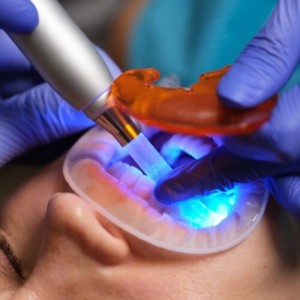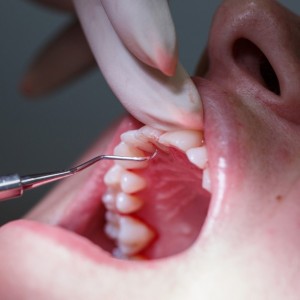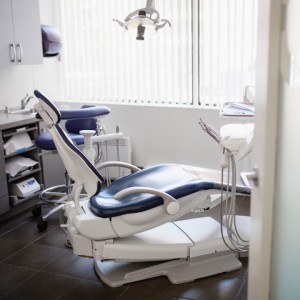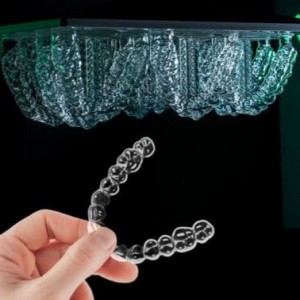
Gingival recessions after orthodontic treatment: do we have any predictor?
Davide Elsido
The development of gingival recessions has been associated with orthodontic treatment; however, a clear etiology is still unknown.
Gingival recession is defined as the displacement of the marginal tissue apical to the cemento-enamel junction.
Gingival recessions have been associated with thermal sensitivity of teeth, increased risk of root caries and constitute one of the main aesthetic complaints of persons seeking reconstructive periodontal therapy.
Gingival recessions are age-dependent and it has been reported that at 20 years, 63 per cent of Caucasian males present at least one recession. This percentage continues to increase and at 50 years, over 90 per cent of the patients have at least one recession.
Habits such as traumatic tooth brushing, piercings, parafunctional activity and occlusal injury have frequently been linked with the development of gingival recessions in non-orthodontic patients. It has also been postulated that anatomic characteristics such as preexisting lack of alveolar cortical bone due to an ectopic tooth eruption outside the dental arch and bony envelope and a small width of keratinized gingiva and thin gingival biotype are additional etiologic factors.
The development of gingival recessions has been considered a common sequel of orthodontic treatment. Suboptimal oral hygiene maintenance during treatment and chronic gingivitis in combination with an orthodontic movement may result in gingival recessions. Furthermore, buccal gingival recessions have been associated with a thin symphysis, excessive proclination of mandibular incisors (more than 10 degrees relative to the mandibular line) with displacement of the cervical region of the roots outside the alveolar cortical bone.
In the March 2019 issue of the Journal The European Journal of Orthodontics an article was published to further clarify potential association between the development of labial and lingual recessions and inclination of the lower incisors during orthodontic treatment, vertical facial morphology, width of the alveolar bone process, height and width of their symphysis after orthodontic treatment and at long-term retention. In the article, on dental casts and good quality lateral cephalograms of 126 orthodontically treated patients, relevant measurements were performed and gingival recessions were assessed.
The authors found no association between the width of the alveolar bone process at the apex, at the level of the crest and at mid of the root, the width, the vertical skeletal pattern (AnsPns-Go’Me) and the onset of buccal or lingual recessions. Development of new recessions was clearly associated with males and with increasing age. The symphysis height was statistically related with the onset of lingual recessions on teeth 3.2 and 4.2. The ratio between the symphysis height and the width at the crest level demonstrated a statistically significant association with the presence of buccal and lingual recessions.
Excessive proclination (≥10°) of the lower incisors demonstrated an association with the onset of recessions in 25 per cent of the cases.
For additional informations:
Long-term evaluation of lower incisors gingival recessions after orthodontic treatment
 Related articles
Related articles
Orthodontics 08 October 2025
The field of orthodontics in its new era is venturing ahead to more up-to-date technological point of view.
Orthodontics 25 August 2025
Orthodontics 25 June 2025
Clinical application of magnets in orthodontics and biological implications: a review
Over the last decade magnets have been used in orthodontic and dentofacial orthopaedics and attempts have been made to evaluate the biological implications of magnets and magnetic fields during...
Orthodontics 10 June 2025
It has long been claimed that presurgical orthodontics is crucial to the outcome of surgical-orthodontic treatment for dentofacial deformity
The use of 3D technology in orthodontics has increased recent years. 3D intra-oral scanning, cone beam computed tomography (CBCT), 3D printing and computer-aided design and computer-aided...
 Read more
Read more
Periodontology 30 October 2025
To update the competences and learning outcomes and their evaluation, educational methods and education quality assurance for the training of contemporary specialists in periodontology
Editorials 30 October 2025
New research explores the prevalence of dental fear and memories underlying it, underscoring the need for accessible treatment.
Products 30 October 2025
LuxCreo, a global innovator in personalized medical and dental devices, announced that it has received a strategic investment from Angelalign Technology Inc., a leading.
News 30 October 2025
GTCR, a leading private equity firm, announced the simultaneous signing and closing of a strategic, structured minority investment in Solmetex (the “company”).
News 30 October 2025
PDS Health, a leading integrated healthcare support organization, has announced the launch of PDS Health Medical, a new business unit that connects medical care to dental practices through connected...















